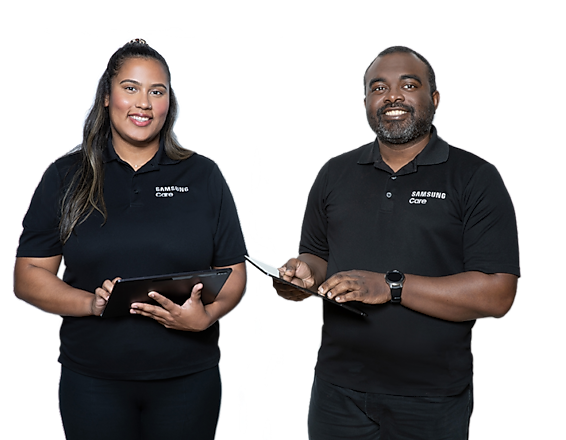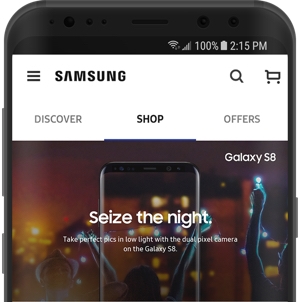What is not covered?
This Standard Limited Warranty is conditioned upon proper use of the Product. This Standard Limited Warranty does not cover:
(a) Defects or damage caused by accident, misuse, abnormal use, abnormal conditions, improper storage, neglect, or unusual physical, electrical or electromechanical stress;
(b) Defects or damage caused by exposure to liquid, moisture, dampness, weather conditions, sand, dust, or dirt that is inconsistent with the specifications and instructions applicable to the Product according to the user manual and the applicable terms and conditions;
(c) Scratches, dents, and cosmetic damage;
(d) Defects or damage caused by pressing on a touch screen with excessive force or with an object not approved by Samsung for use on the Product’s touch screen;
(e) Equipment that has the serial number or the enhancement data code removed, defaced, damaged, altered, or made illegible;
(f) Ordinary wear and tear;
(g) Defects or damage caused by the use of accessories, products, or ancillary/peripheral equipment not furnished or approved by Samsung;
(h) Defects or damage caused by improper testing, operation, maintenance, software, installation, repair service or parts, or adjustment not furnished or approved by Samsung;
(i) Defects or damage caused by a user’s bypassing security controls to gain unauthorized root access or by rooting devices with unauthorized or altered operating system software installed by a user or third party;
(j) Defects or damage resulting from external causes such as collision with an object, fire, flooding, windstorm, lightning, earthquake, theft, blown fuse, or improper use of any electrical source;
(k) Defects or damage caused by cellular signal reception or transmission, or viruses or other software problems introduced into the Product; or
(l) Product purchased or intended for use and sale outside the United States. This Standard Limited Warranty covers batteries only if battery capacity falls below 80% of rated capacity or if the battery leaks. For batteries that fall below 80% of rated capacity or that leak, this Standard Limited Warranty does not cover any battery if the diminished battery capacity or leak is caused by:
(i) The use of a third-party battery charger which does not meet Samsung’s specifications or has not been specifically approved by Samsung for charging the battery;
(ii) Tampering, as evidenced by, for example, a broken seal or seals on the battery;
(iii) The use of the battery in equipment other than the Samsung device for which it is specified;
(iv) The battery was subjected to external forces beyond normal use; or
(v) Battery repair not furnished or approved by Samsung.
If the Product has any non-warranted damage, after-market modifications or out-of-specification, or non-approved parts that impair Samsung’s ability to evaluate whether damage or defects are covered by the warranty or Samsung’s ability to make an in-warranty repair (e.g., a cracked screen that must first be removed), then Samsung will notify you and you will have the following options:
(i) You may have Samsung return the Product to you at your cost and, at your option, resubmit the Product for warranty evaluation of in-warranty repair after the impairing condition has been repaired, corrected, or reversed; or
(ii) You may have Samsung repair, correct, or reverse the impairing condition at your cost, prior to Samsung’s provision of such warranty evaluation or in-warranty repair. Samsung will not make any warranty determinations or repairs until the impairing condition has been repaired, corrected, or reversed.
Under no circumstances will Samsung be obligated to maintain, restore, or repair any after-market changes to the Product’s hardware or software.







